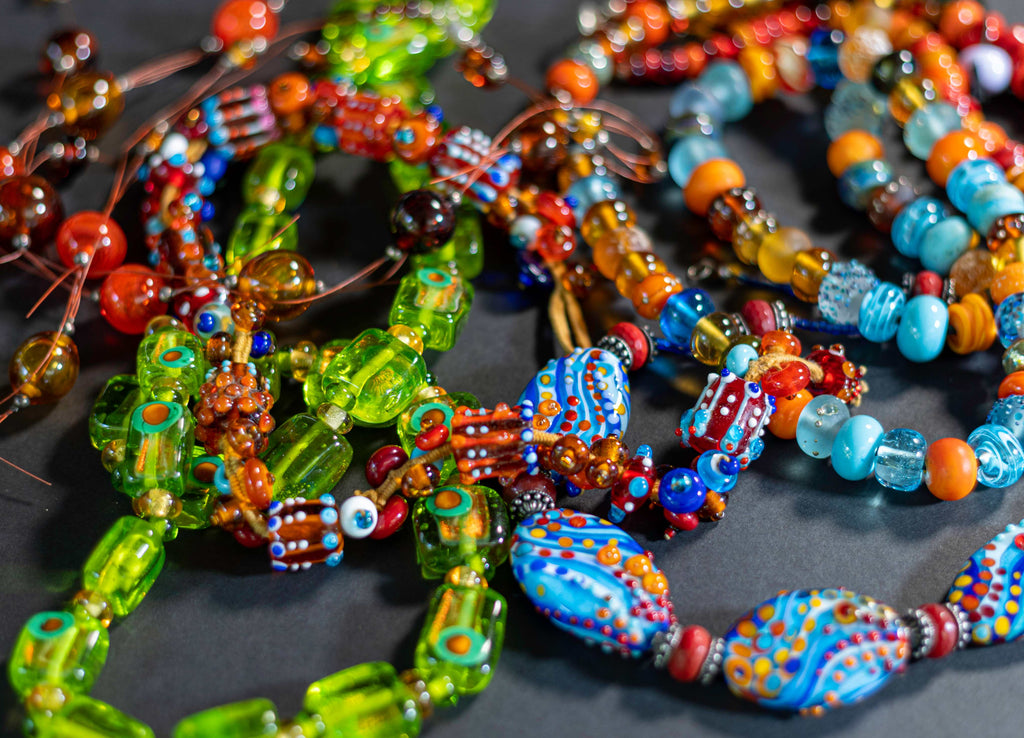Lampwork Glass: An Art Form That Captivates the World

Lampwork glass is an art form that has been captivating artists and art lovers for centuries. It is a glass working technique that involves using a torch to heat and shape the glass into intricate and beautiful designs, sometimes blown into a shape, sometimes wound around a metal rod, and sometimes formed using graphite and/or brass shaping tools. The patterns created by the artist often require elements to be made prior to starting to make a bead, such as thin stringers of colour, twisties or murinni/millefiori. At times, premade decorative elements such as noodles (also known as ribbons or strips) and dichroic glass may also be used. Lampwork glass is used to create a wide range of items, including beads, figurines, jewellery, and other decorative objects. With its unique beauty and versatility, it is no wonder that lampwork glass has become a popular and sought-after art form.
The History of Lampwork Glass
The art of working with glass has its roots in ancient civilizations, such as the Egyptians and Romans, who used flame, although nothing like the equipment used today, to create glass beads and other decorative objects. However, it wasn't until the 16th century that the art form became more widespread. In the centuries that followed, lampwork glass became increasingly popular, with artisans and glassblowers perfecting their techniques and creating more intricate and beautiful pieces.
Today, lampwork glass continues to be a popular art form, with artists and art lovers alike appreciating its beauty and versatility. Many artists specialise in creating unique and custom pieces, using a variety of techniques and styles to create one-of-a-kind works of art.
The Art of Lampwork Glass
Lampwork glass is created using a torch to heat and shape the glass. The artist begins by melting a rod of glass over the flame, which they then shape and mould into the desired design. They can add different colours and textures to the glass by adding different types of glass rods and frit (crushed glass) to the main piece. Once the piece has been shaped and moulded, the artist then anneals it, which is a process of slowly cooling the glass to prevent it from cracking.
One of the unique aspects of lampwork glass is that every piece is unique and cannot be replicated exactly. This is because the artist, although having almost full control over the shape, size, and colour of the piece, the heat of the torch can cause the glass to react differently every time. This makes each piece a truly unique work of art.
The Benefits of Lampwork Glass
Lampwork glass is not only beautiful, but it is also durable and long-lasting. Because it is annealed, it is much less likely to crack or break than other types of glass. Additionally, lampwork glass is versatile, and can be used in a wide range of applications, including jewellery-making, home decor, and even in the creation of scientific instruments.
Lampwork glass is a truly captivating art form, with its unique beauty and versatility that has been attracting artists and art lovers for centuries. Whether you are an artist or simply someone who appreciates beautiful and unique works of art, lampwork glass is definitely worth exploring. With its rich history, intricate designs, and versatility, it is a truly remarkable and fascinating art form that continues to captivate people from all over the world.
Leave a comment